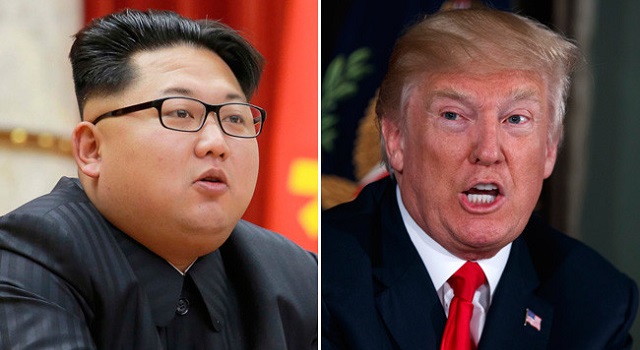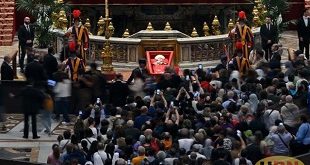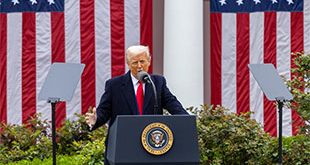
Seoul, South Korea | AFP | The planned second summit between US President Donald Trump and North Korean leader Kim Jong Un needs to make tangible progress on Pyongyang’s nuclear weapons if it is to avoid being dismissed as “reality TV”, analysts say.
Their summit in Singapore in June was undoubtedly historic, the first ever encounter between the leaders of two nations whose forces — backed by arrays of allies from each side of the Cold War — fought each other to a standstill decades ago.
The world’s media were transfixed as the pair shook hands on the verandah of a historic hotel and strolled together in its grounds, before Trump held an hour-long press conference extraordinary even by his own unique standards.
But the agreement they signed was long on rhetoric and short on details, with Kim pledging to work towards the “denuclearisation of the Korean peninsula”.
Progress has since stalled as Pyongyang and Washington disagree over what that means and how to achieve it, with each accusing the other of dragging their feet and acting in bad faith.
Critics say North Korea has made no concrete commitments and is unlikely to surrender its atomic arsenal, while Washington’s policy of maintaining pressure through isolation and sanctions has left Pyongyang seething.
Even so the White House said Friday Trump would meet the North Korean leader again “near the end of February” at a location yet to be announced.
“Now the hard work begins,” said Harry Kazianis of the Center for the National Interest in Washington.
“Both nations must now show at least some tangible benefits from their diplomatic efforts during a second summit, or risk their efforts being panned as nothing more than reality TV.”
– Tangible measures –
The North has carried out six nuclear tests and launched missiles capable of reaching the entire US mainland, but the exact size of its atomic armoury remains unconfirmed.
“All efforts should be poured into having the North come to the table with a complete list of its nuclear arsenal,” Kim Sung-han, professor of international relations at Korea University, told AFP.
The declaration would be a tangible step in itself, he said, adding Trump should not lift sanctions or agree to formally end the 1950-53 Korean War — when hostilities stopped in a ceasefire rather than a peace treaty — for “anything other than the list”.
When South Korean President Moon Jae-in, who has sought to engage the North as he brokered the talks process, went to Pyongyang in September for his third summit with Kim, his host offered to shutter a missile-testing site and the Yongbyon nuclear complex if the US takes unspecified “corresponding measures”.
Washington has repeatedly said it expects the North to give up its nuclear arsenal, doggedly developed over decades by the Kim dynasty, at a vast cost in resources and isolation, and multiple sets of international sanctions.
But the North sees denuclearisation more broadly, seeking an end to the sanctions and what it sees as US threats against it — sometimes referencing Washington’s military deployments in the wider region, such as Japan and Guam.
An absence of a clearly-worded agreement will raise scepticism over Pyongyang’s sincerity, pointed out Lim Eul-chul, professor of North Korean studies at Kyungnam University.
“If the wording of a second summit agreement is similar to the June 12 statement, it will make it very difficult for Trump to defend his North Korea policy,” he said.
Pyongyang might agree to shut down the Yongbyon complex and a missile test centre in the presence of international inspectors, Lim said, but “only if Washington eases sanctions and agrees to the end-of-war declaration”.
And some analysts have raised concerns about recent Trump administration comments about removing the threat to the US, suggesting that could imply the North giving up its intercontinental ballistic missiles while retaining its bombs and the ability to threaten its near neighbours.
– Good to talk? –
The issues are complex and the details will be key. But unlike other such diplomatic processes, there have not been repeated rounds of lower-level talks to prepare for the second Kim-Trump summit.
Stephen Biegun, the US special representative on North Korea, is to attend a conference in Sweden starting Saturday that will involve Pyongyang officials.
He is expected to sit down with Choe Son Hui, a top North Korean diplomat intimately involved in the US-North Korean relationship.
For the next summit to go well, Biegun and Choe “need to spend scores of hours talking in the next weeks”, tweeted Ankit Panda of the Federation of American Scientists.
But there was a “fundamental tension” between the two sides, MIT professor Vipin Narang responded: “For the summit to be worthwhile for the US, the working level talks have to make a lot of progress. But for the summit to be worthwhile for NK, they want to make as little progress as possible”.
 The Independent Uganda: You get the Truth we Pay the Price
The Independent Uganda: You get the Truth we Pay the Price



